On the Road to Rescue: A History of 4x4s in Scottish Mountain Rescue
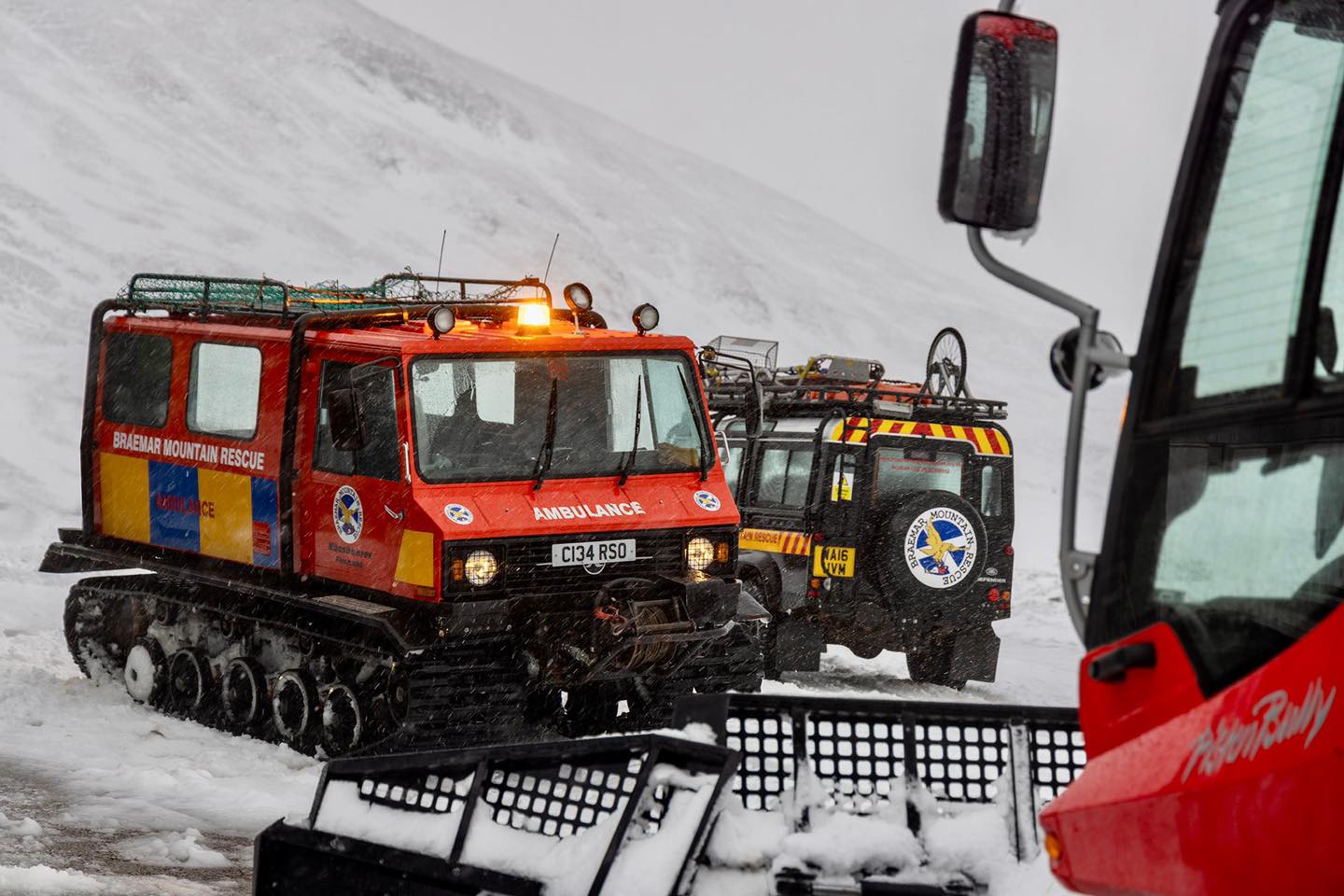
On the Road to Rescue: A History of 4x4s in Scottish Mountain Rescue
The origins of Mountain Rescue in Scotland were ad hoc, and therefore it should come as no surprise that so too was its use of vehicles. Prior to the formation of the civilian teams that we know today, mainly through the 1960s and 70s, Mountain Rescue (MR) was an informal affair, with official input from the RAF and the Police assisted by local volunteer networks of farmers, gamekeepers, doctors and teachers to name but a few of the professions that have contributed.
“Stories of Mountain Rescues in the early days of the civilian teams tend to involve long walks and equipment that was “beg, borrow or…” and personal vehicles were the norm. These took a variety of forms – when Bob Burnett, still the survivor of the longest known full avalanche burial in Scotland in 1965, was transported down from the base of Beinn a’Bhuird in the Cairngorms this was on a tractor cart filled with hay.”
However as the teams became ever more formalised, and their finances improved through the 1980s and 90s, they began to make the investment in vehicles. This was frequently assisted by the generosity of the Order of St. John, who continue to support these developments as well as assisting in the purchase and refurbishment of team bases.
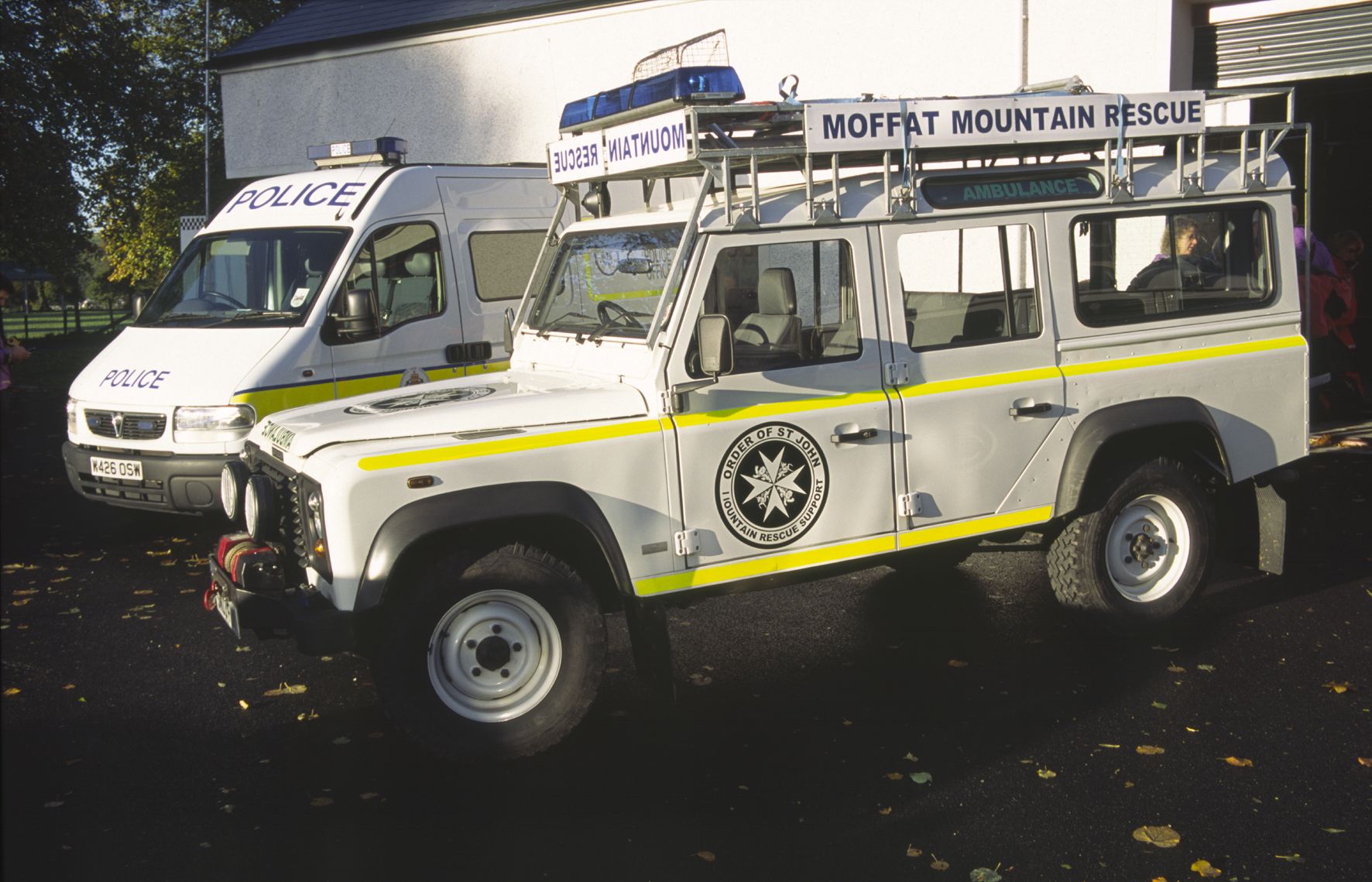
Image © Moffat MRT
The sheer variety of the Scottish landscape, one of the factors that makes time spent in it so satisfying, also means that teams have differing requirements from their vehicles. Some teams will muster at a base, going on from there in team vehicles, but other teams with large areas to cover and members travelling from far and wide will meet at a roadhead before jumping in the MR vehicle that a single team member has collected.
The terrain also varies, with large expanses without access roads or tracks requiring long walk-ins, whereas other teams can get their vehicles relatively close to the casualty. All of this requires a “horses for courses” approach, although the near ubiquity of the Land Rover Defender, in various guises and vintages, through the Scottish Mountain Rescue teams testifies to their capability and versatility.
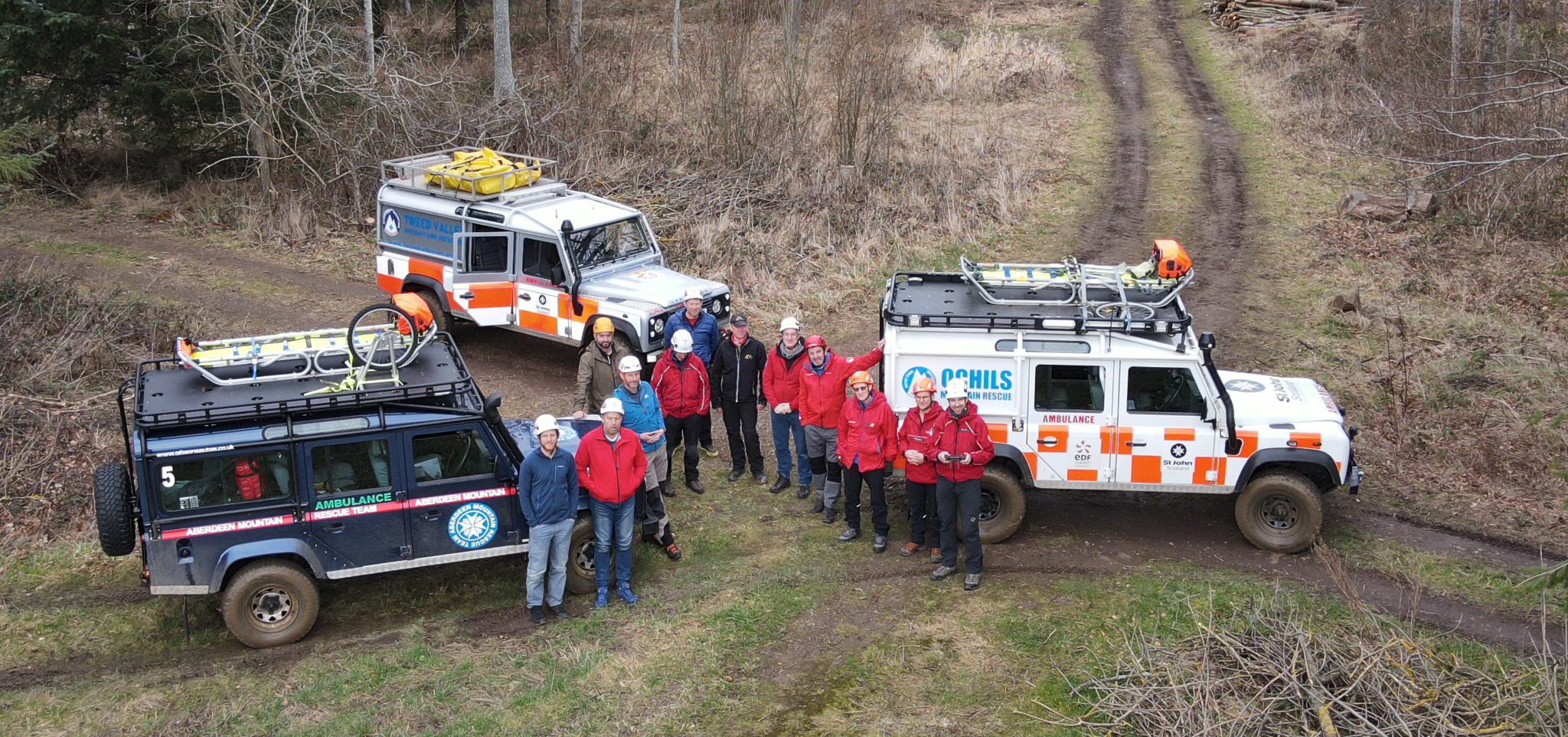
Image © Tom Nash, SARAA
The simple nuts and bolts build of the Defender allowed them to be modified to suit teams needs, either in the 130” wheelbase or more common 110” version. The passenger compartment was long enough to take a loaded stretcher, or could fit 5-9 personnel plus rucksacks depending on the model, although sometimes a tight fit. These were frequently also fitted with winches, radio repeaters and scene lights as well as roofracks for the carrying of bulky but lightweight items such as (empty) stretchers or even the spare wheel. This last one generally did not persist beyond the first puncture, however, since getting the wheel down often proved less easy than hoped!
Once the workhorse Defender ceased to be produced in 2016 teams were faced with a number of options. Some with the cashflow accelerated their replacement cycle, but the price appreciation that followed has informed the choice of some teams to repair and rebuild their existing Defender, many of which have driven relatively few miles for a vehicle of their age… although sometimes hard-fought miles. By putting them on a new chassis to address a well-known corrosion problem (and to install rollover protection, another weakness of the original design) these vehicles can be given a new lease of life.
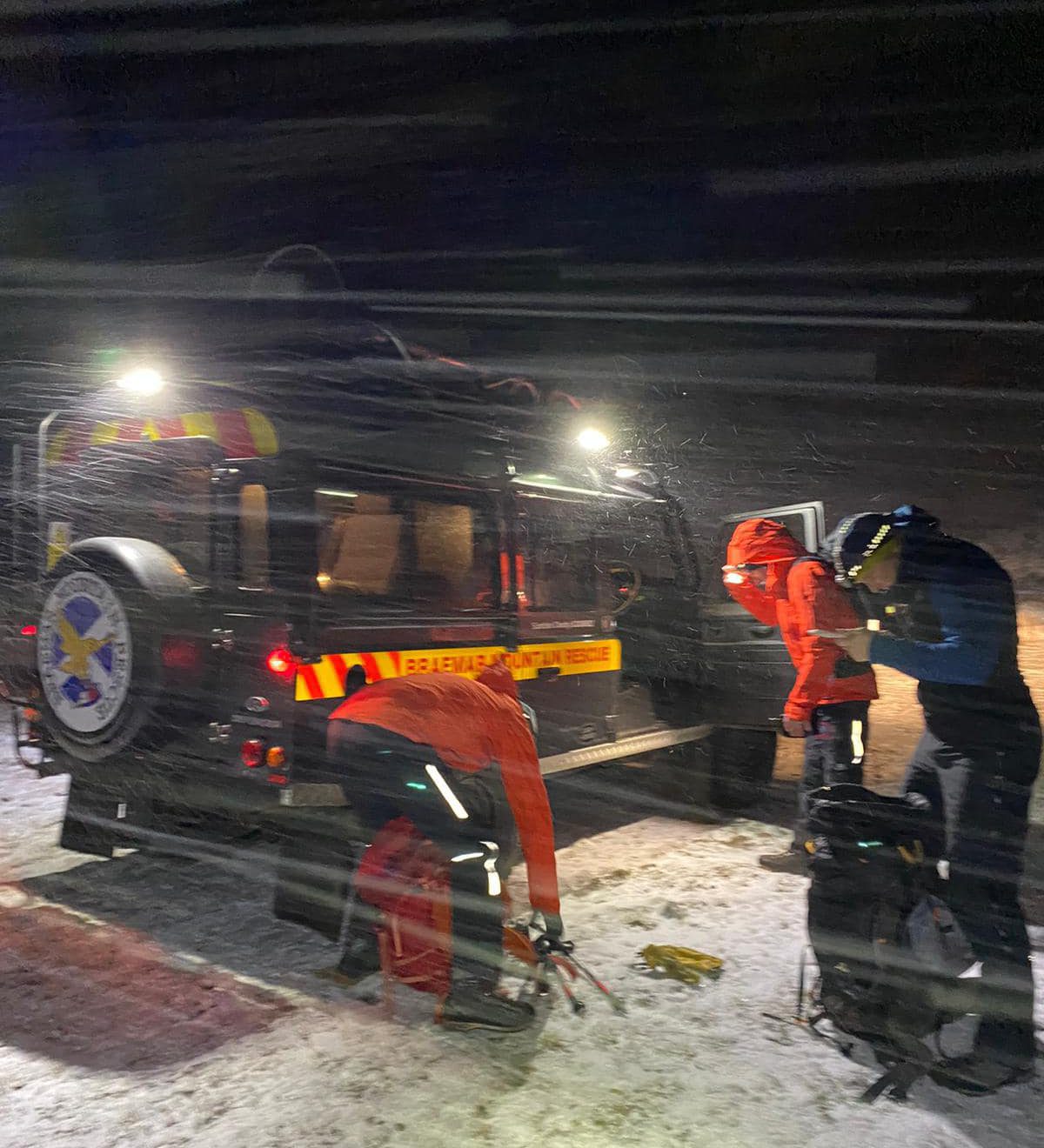
Image © Braemar MRT
However the Defender is not the only game in town, and teams have long experimented with other types. Terrain plays its part again, with the larger contact patch of tracked vehicles proving very valuable in dealing with snowy winter conditions or softer ground surfaces such as heather or peat.
These vehicles come in a range of sizes and capabilities, from nimble ATVs and tracked quads to Argocats and even the large Kassbohrer piste bashers operated by Braemar MR. The first, used by Tayside MR and others, offers a fast in-fast out option to quickly recover a casualty in difficult conditions underfoot, but although less swift the Argocat is more versatile. With balloon tyres it can get across rough ground and heather, but with the tracks added for winter offers another dimension in tough conditions.
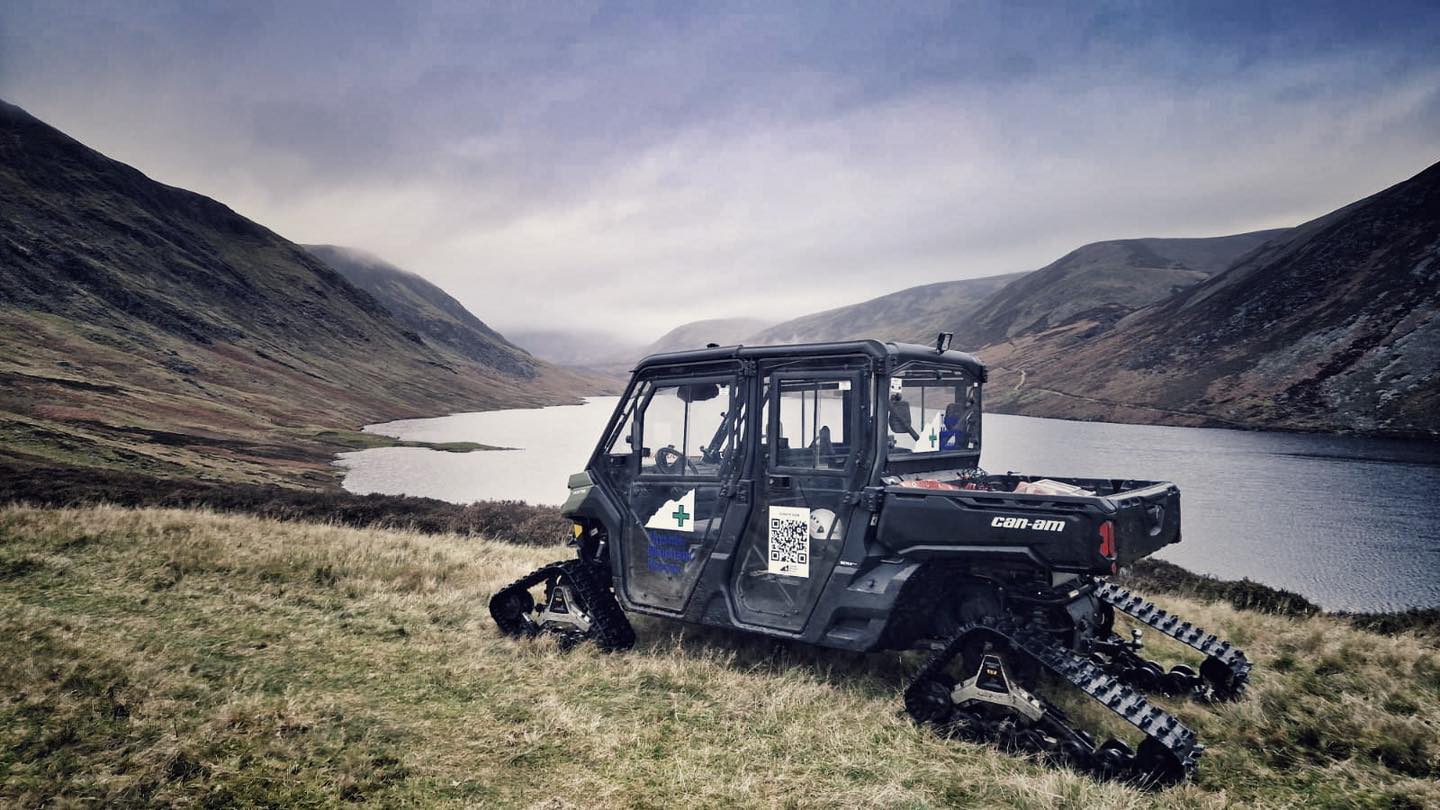
Image © Tayside MRT
The Kassbohrers are instantly recognisable and extremely capable but very reliant on snow cover to be operational. Whilst we are seeing fewer of these winters in recent years, in the right conditions, as in very challenging ones, they are unrivalled. They are, effectively, mobile bothies as well as troop carriers
“– after hours of searching the Cairngorm plateau in a blizzard at night the comfort and relative quiet of the heated module on the rear is a haven for a few moments of rest.”
They can also be a valuable resource for community resilience, as demonstrated during the heavy snowfall of early 2021 when they were used to assist SSEN in repairing downed power lines.

Image © Braemar MRT
In the farming community the popular, and financially attractive, alternative to the Land Rover for some time has been a pickup, and there are not many teams left through Scotland without one in their stable. Whilst they are not as capable as the Defender offroad this is not always a constraint and they tend to be an easier drive on the road. They are not the perfect option, though, where the separate cab and loadbed means that carrying a stretcher is not feasible, and whilst they are designed to transport a heavy payload the high volume but low weight of MR rucksacks, casualty bags and stretchers makes space at a premium in the back.
This is partially driving an increasing exploration by teams of using large vans with four wheel drive systems. These have a long history in MR in Scotland, as far back as the early civilian teams, but the improvements in vehicle design have made these more robust and more versatile. The previously mentioned need for some teams to operate far from fixed bases has been met by large vans kitted out as mobile command centres, equipped with computers, radios and Nespresso machines!
“It is clear, though, that MR vehicles will evolve as the energy transition gains pace, and our shared love of the natural environment compels us to consider this carefully.”
Whether the future of the MR vehicle is an electric or a hydrogen one is too early to pin down, we are a small link in a bigger chain that is forming, but Scottish Mountain Rescue is discussing with a number of manufacturers to plan for change and to assist its member teams.
by Julian Fennema,
Braemar MR team member and Scottish Mountain Rescue 4×4 Instructor